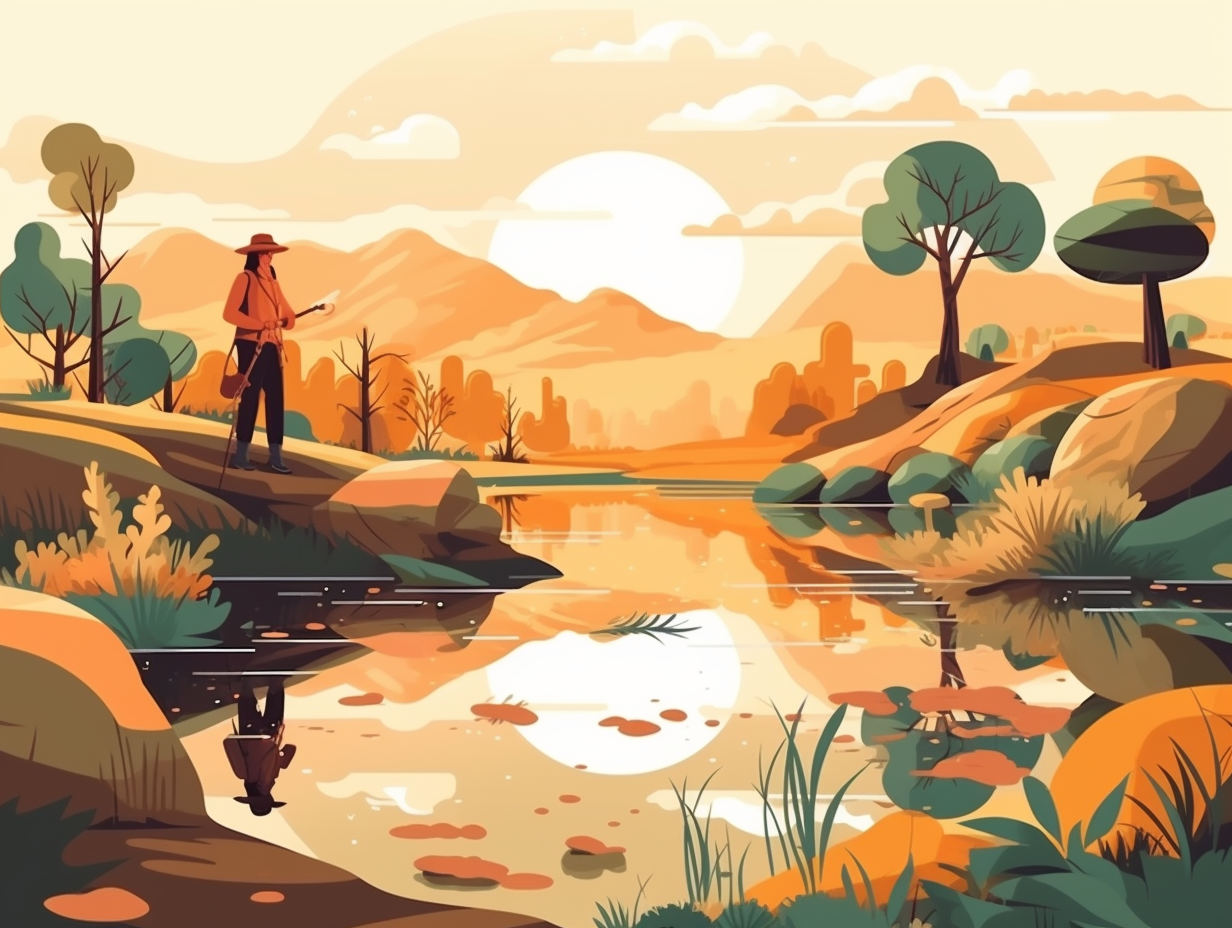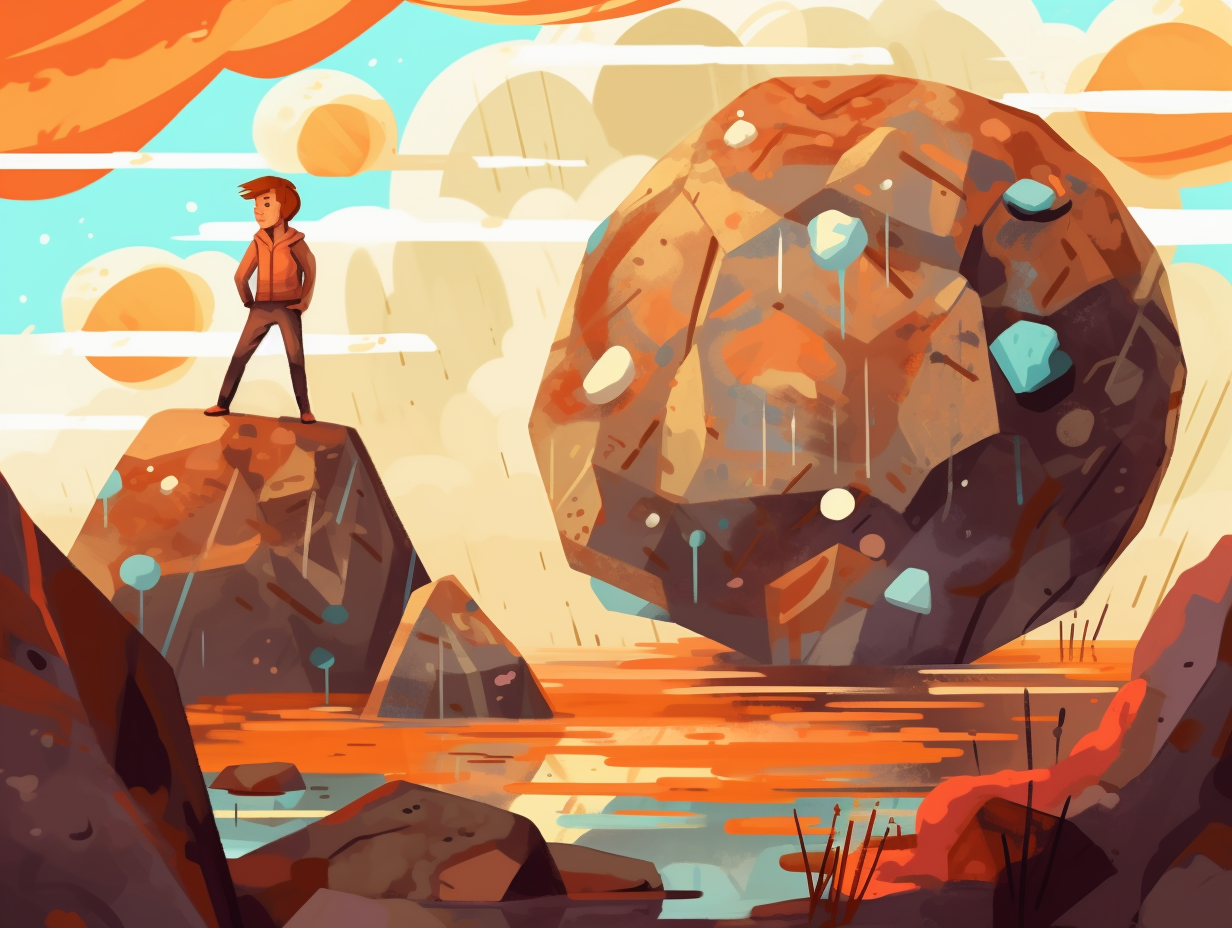Discover Earth's Treasures: 14 Amazing Fun Facts About Natural Resources!

1. Rhodium: The A-List Metal Star
If rhodium were a movie star, it'd be sitting in the A-list section, sipping champagne, and laughing at gold's feeble Oscar hopes: This rare precious metal boasts an average nominal price of $1,500 per ounce over the last 40 years—50% higher than gold's price during the same time frame—and stars mainly in the car industry as a critical component of catalytic converters, with its own future tied to the box-office success of the global automobile industry.
Source => moneyweek.com
2. Methanogens: Our Gassy Little Friends
Pass the gas, please: Methanogens, tiny microorganisms surviving in low-oxygen environments like landfills, produce a type of methane called biogenic methane, making methane the most abundant organic compound on Earth and a potential energy source, if only we could contain these gassy creatures' aromatic contributions.
Source => nationalgeographic.org

Did you know water has a unique Jekyll-and-Hyde personality, allowing it to exist as both liquid and solid? Discover how this crucial trick keeps life afloat on Earth! 🌊❄️
=> Fun Facts about Water
3. Earthworms: The Soil's Eco-Superheroes
Move over, Captain Planet: Earthworms are the underrated eco-superheroes the soil desperately needs! These wriggly wonders not only enrich the earth with nutrients, but also help clean up contaminated land and serve as a vital food source for other critters: By burrowing through soil, they create fertile grounds containing far more nitrogen, phosphorus, and beneficial bacteria than the original soil, enhance bioremediation processes that break down pollutants, and are essential protein-providers in the food chain for birds, hedgehogs, and frogs alike.
Source => soilassociation.org
4. Rivers with Human Rights
Move over humans, rivers are getting room at the legal table: In 2019, Bangladesh bestowed upon all its rivers the same legal rights as humans, echoing New Zealand's Whanganui River, which slid into personhood status back in 2017. This wave of legal innovation is flowing through various countries as they aim to protect and preserve their liquid assets.
Source => apnews.com

5. Plankton: Oxygen Producers in Disguise
Hold your breath, plankton's got your back: Tiny oceanic bacteria called Prochlorococcus singlehandedly churns out up to 20% of Earth's oxygen, proving that you don't have to be large to be in charge! In fact, our great blue seas beat out rainforests as air recyclers, although marine life and decomposition clandestinely snatch up that sweet O2, sometimes even creating underwater "dead zones" when they're a bit too overzealous.
Source => oceanservice.noaa.gov
6. The Colorful World of Crude Oil
Whoever said oil was just a crude matter certainly lacked the chromatic appreciation of a painter: petroleum can actually be found in a colorful array of shades like yellowish, reddish, tan, and even greenish, due to the various chemical compositions present in different supplies of crude oil.
Source => education.nationalgeographic.org
7. India's Fluoride Buffet
Did you hear about the all-you-can-eat fluoride buffet in India? It's naturally famous for its dental strengthening properties and chic-cuisine contaminants: In India, 65% of villages are exposed to dangerously high levels of fluoride in water due to the use of fluoride-containing fertilizers, with areas like Udaipur district in Rajasthan experiencing extreme contamination from industrial activities like smelting processes that emit hazardous pollutants such as hydrogen fluoride.
Source => ncbi.nlm.nih.gov
8. Wind Power: Breaking Wind for Good
Hold on to your hats, folks, because the wind is blowing away our dependence on fossil fuels in the most eco-friendly way possible: Wind energy, the largest source of renewable power in the United States, generates clean electricity by powering up wind turbines without burning any fuel or emitting harmful substances—talk about breaking wind for a good cause! This gusty goodness helps avoid the emission of 329 million metric tons of carbon dioxide annually, equivalent to taking 71 million cars off the road.
Source => energy.gov
9. Mining's Impact on Middle Earth
Like greedy dwarfs mining for treasure in a Tolkien tale, we humans have our own little impact on Middle Earth's hydrosphere and atmosphere: Believe it or not, mining and extracting natural resources are significant contributors to environmental change, making resource management a hot topic for environmental science and geology enthusiasts.
Source => serc.carleton.edu

10. Lesedi La Rona: The BFF Diamond
If diamonds are a girl's best friend, then the Lesedi La Rona diamond must be the BFF squad leader: Discovered in Botswana in 2015, this gem-quality monster weighed in at a whopping 1,109 carats – securing its place as the world's second largest rough diamond. Laurence Graff, the kingpin of diamond enthusiasts, coughed up a cool $53 million for this geological marvel and, after two years of meticulous cutting and polishing, presented his masterpiece: the Graff Lesedi La Rona, the world's largest square emerald cut diamond, weighing in at 302.37 carats.
Source => naturaldiamonds.com
11. Peat: The Decomposing Plant Party
What do you get when plants throw a decomposing party in a low-oxygen environment? A peat-a-palooza, of course! : In all seriousness, peat is a natural resource formed from generations of dead, partially decayed plants, essentially the first step in coal formation, and sometimes used for domestic heating despite its lower energy density.
Source => energyeducation.ca
12. Gallium: The Metal Monarch
In a world where gallium is king and iPhones bow down to its mighty rule, the US plays the part of a humble peasant: The United States is entirely reliant on imports for this essential metal, mainly from China, which mined 97% of the world's gallium in 2020. Fear not though, for the discovery of North American gallium-stocked treasure troves like the Round Top rare earths project in Texas and Appia Energy's Alces Lake rare earths project in Saskatchewan could lead to a future of gallium-fueled independence for the land of the free.
Source => miningnewsnorth.com
13. Agave: Tequila's Sustainable Biofuel Buddy
Thirsty for some eco-friendly fuel? Let agave save the day: This spiky, tequila-loving plant actually requires far less water than maize corn and sugarcane, making it a sustainable superstar for biofuel production. In fact, an Australian study found agave-based bioethanol outperforms maize corn and sugarcane bioethanol in terms of reducing water consumption, lowering greenhouse gas emissions, and boosting ethanol output. So, while the economics are still being mulled over, agave's resilience in the face of drought and semi-arid conditions could make it the spirited choice for green energy's future.
Source => thefurrow.co.uk
14. Biogas: Ancient Poop Power
It might not be the most "poo-pular" energy source, but it's been around for centuries: Biogas, created by decomposing organic matter like animal manure, has been used for heating bath water in ancient Assyria and powering China's 13th-century sewage systems. Today, it's an essential renewable energy resource, with China generating a whopping 3.8 TWh of electricity – and countries like Pakistan sitting on a goldmine of cow and buffalo poop, having the potential to produce 19.79 TWh of electricity per year!
Source => frontiersin.org
Related Fun Facts




















